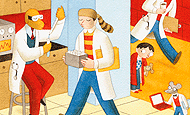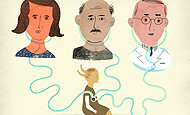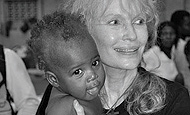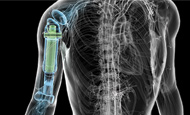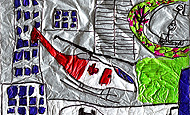
Spring 2010
Drawing on disparate branches of science is allowing pediatric physician-scientists to invent new ways around the collateral damage that complicates pediatric care.
BACK ISSUES
Online versions of the magazine from 1999 to present are still accessible. BACK ISSUES »

Subscribe to Stanford Medicine

Download Printable Issue (PDF)
Sugar time
Scientists have long struggled to understand the body’s biological clock. MORE . . .
Early cancer warning?
Researchers at the School of Medicine have shown that ultrasound energy delivered to specific body regions can trigger the release of biochemical disease markers from tissues, making those markers more detectable as well as helping to pinpoint their source. MORE . . .
Kidney punch
For older residents of U.S. nursing homes, starting dialysis may do more harm than good, heralding a decline in their ability to perform daily tasks such as feeding themselves, getting dressed or brushing their teeth. MORE . . .
Rejecting rejection
A “desensitization” drug, intravenous immunoglobulin, or IVIG, has been designed to lower the number of organ-rejecting antibodies in patients who are highly “sensitized.” MORE . . .
Sperm from scratch
Scientists have a promising new tool for understanding infertility: cells derived from unused embryos created for in vitro fertilization. MORE . . .
Letter to our Readers
Pediatric care and research
THE BACKSTORY
Down to the wire

